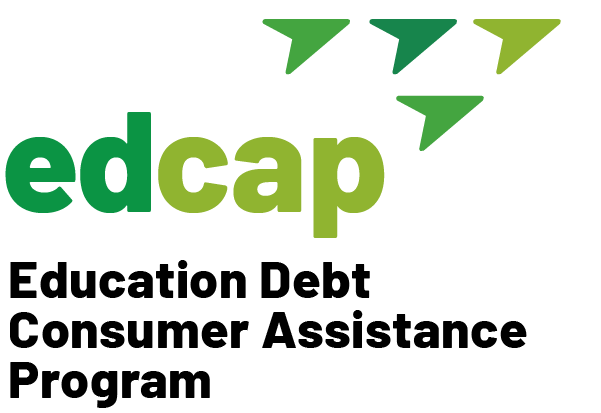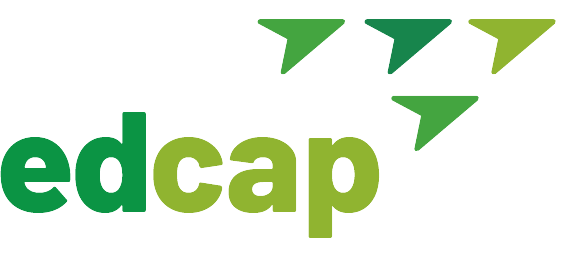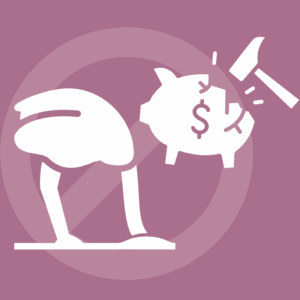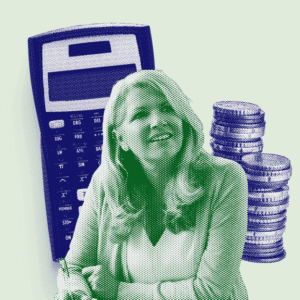A Timeline to Help You Stay Ahead of Student Loan Changes — And What They Mean for You
Major updates to repayment plans, forbearance rules, and forgiveness programs are taking effect over the next three years. This page breaks down what’s changing and when, so you can make informed decisions about your repayment strategy.
Before diving in, know that involuntary collections resumed on May 5, 2025 for borrowers in default. Learn more here.
Looking for info about new borrowing caps? Click here to learn about new loan limits that start July 1, 2026.
For Borrowers Currently In The SAVE Plan:
Deciding whether to stay or switch depends on your ability to afford a new plan and your repayment or forgiveness goals.
August 1, 2025: Interest Resumes for Borrowers in SAVE Forbearance
After a temporary forbearance paused interest on loans under the SAVE plan due to legal challenges, interest will resume for approximately 7.7 million borrowers.
- What this means: Borrowers will not have to make payments while they are in the SAVE Forbearance, but interest will accrue and loan balances will grow.
- Your options:
- Stay on SAVE (interest will now accrue).
- Switch to a different income-driven repayment plan: IBR, PAYE, or ICR (if eligible).
Important caveat: PAYE and ICR will only remain available until 2028 for borrowers who took out loans before July 1, 2026. Borrowers taking out loans after that date will not have access to these plans. This means you will need to switch again if you enroll in PAYE or ICR.
Ending Soon: The SAVE Forbearance (Exact Date TBD)
The U.S. Department of Education has signaled that SAVE forbearance will end soon, though the exact date remains uncertain and may depend on ongoing litigation.
- What this means: All borrowers currently relying on the SAVE forbearance will eventually need to switch to a different repayment plan.
- Action steps:
- Monitor your loan servicer account regularly to stay informed about when the forbearance may end.
- Use a repayment calculator (such as the Loan Simulator on studentaid.gov) to compare your options and determine which plan best fits your needs.
- Apply to switch repayment plans at studentaid.gov/idr now or before the forbearance officially ends. When you apply, you may receive an automatic 60-day processing forbearance, giving you more time before payments resume.
Key Dates to Know if You Got Your Loans Before July 1, 2026
Big changes are coming to student loan repayment. If your loans were disbursed before July 1, 2026, here’s what you need to know and when you may need to act.
Before July 1, 2026: Act Now if You Have Parent PLUS Loans
To stay eligible for forgiveness programs like Income-Driven Repayment Forgiveness (IDRF) or Public Service Loan Forgiveness (PSLF), you must:
- Consolidate your Parent PLUS loan into a Direct Consolidation Loan
- Enroll in the Income-Contingent Repayment (ICR) plan
- Complete both steps before July 1, 2026*
- After this date, new or reconsolidated Parent PLUS Loans will only qualify for the Standard Repayment Plan, which does not offer forgiveness options.
*Some of these rules are still being finalized and subject to change.
Before July 1, 2028: Current Borrowers Can Enroll in Existing IDR Plans
If your loans were disbursed before July 1, 2026, you can still enroll in or stay on these current IDR plans until July 1, 2028:
- Income-Based Repayment (IBR)
- Pay As You Earn (PAYE)
- Income-Contingent Repayment (ICR)
After this date, PAYE and ICR will sunset. IBR will remain an option.
The new RAP plan will be available by July 1, 2026, for all borrowers except Parent Plus.
After July 1, 2028: Borrowers in PAYE and ICR Will Transition to IBR
Borrowers already on PAYE or ICR will be transitioned to a revised version of the IBR plan with the following features:
- No income eligibility test
- Monthly payments capped at what you would have paid under the 10-year Standard Repayment Plan when you first entered IBR
- Payment amount and forgiveness terms depend on when your loans were first disbursed:
- Before July 1, 2014: 15% of discretionary income; forgiveness after 25 years
- On or after July 1, 2014: 10% of discretionary income; forgiveness after 20 years
Ongoing: Repayment Options for FFEL Loans
If you have FFEL loans, your repayment options are different from those with Direct Loans. Here’s what you need to know:
Eligible for Income Base Repayment (IBR)
- Payments are 15% of your discretionary income
- Loan forgiveness after 25 years of repayment
Eligible for existing Traditional Plans
- Includes Standard, Extended, and Graduated Repayment Plans
Repayment Assistance Plan (RAP)
- FFEL loans must be consolidated to qualify
- No deadline to consolidate
- Important: If you consolidate on or after July 1, 2026, the new loan is only eligible for RAP or the Standard Plan. You will lose access to IBR.
- Caution: Consolidating could erase any progress toward Income Driven repayment forgiveness under IBR and RAP forgiveness takes 30 years.
Parent PLUS FFEL Loans
- To access ICR (and later IBR), you must consolidate and enroll in ICR by July 1, 2026. If you consolidate after that date, only the Standard Plan will be available.
If Your Federal Loans Are Disbursed On or After July 1, 2026:
You’ll have just two repayment plan options to choose from.
Standard Fixed Repayment Plan
- Repayment term ranges from 10 to 25 years, depending on total loan balance.
Repayment Assistance Plan (RAP)
- Monthly payments range from 1% to 10% of your Adjusted Gross Income (AGI).
- You receive a $50 reduction in your monthly payment for each dependent claimed on your tax return. This typically includes children under 19, full-time students under 24, or others you financially support according to IRS guidelines.
- Minimum monthly payment is $10, even if you have no income.
- Spousal income can be excluded if you file taxes separately.
- There is no income protection threshold and no adjustment for inflation.
- No interest accrual on unpaid interest — your loan balance will not grow due to unpaid interest.
- Loan forgiveness is available after 30 years of qualifying payments.
- Eligible for Public Service Loan Forgiveness (PSLF) if all other requirements are met.
Important Note: If you take out any new loans on or after July 1, 2026, all of your loans must be repaid under one repayment plan, unless you hold both student loans and Parent PLUS loans, in which case you may select the RAP plan for your student loans while paying the Parent Plus loans back in the Standard Plan.
More Info on the Available Repayment Plans
Repayment Plan Transition Timeline for Current Borrowers (Loans disbursed before July 1, 2026)
Borrower Type | 2025 | July 1, 2026 | July 1, 2028 |
Student Borrower | • Standard Plans • IBR, PAYE, ICR | • Standard Plans • IBR, RAP • Can remain in PAYE and ICR if enrolled before 7/1/2026 | • Standard Plans • IBR, RAP • PAYE and ICR sunset; must switch to another plan |
Parent PLUS Borrower | • Standard Plans • ICR (if consolidated) | • Standard Plans • IBR (if already in ICR or other IDR plan by 7/1/2026) | • Standard Plans • No IDR access |
If you take new loans on or after July 1, 2026, you must pay all your loans back in the same repayment plan (exceptions are made if you have both student and Parent Plus loans).
Key Plan Details
Repayment Plan Assistance (RAP)
- Payments: 1%–10% of AGI
- $50 deduction per dependent
- Minimum payment: $10
- Spousal income excluded if filing separately
- No protected income or inflation adjustment
- No interest accrual
- Forgiveness after 30 years
- Eligible for PSLF
Income Base Repayment (IBR) (Modified Version)
Available only for borrowers with loans disbursed before July 1, 2026.
- No income eligibility test required.
- Monthly payment cap remains in place.
- 15% of discretionary income if you have any loan disbursed before July 1, 2014, with forgiveness after 25 years of qualifying payments.
- 10% of discretionary income if you are a new borrower whose first loan was disbursed on or after July 1, 2014, with forgiveness after 20 years.
- Not available to borrowers with loans disbursed on or after July 1, 2026.
Standard Plan (New Version)
Other Important Dates to Keep in Mind:
July 1, 2027: New Limits on Deferments and Forbearances
- Loans disbursed on or after July 1, 2027, will not be eligible for economic hardship or unemployment deferment.
- Loans disbursed on or after July 1, 2027, will be limited to 9 months of forbearance within any 24-month window.
- Borrowers can rehabilitate defaulted loans twice (previously limited to once).
July 1, 2028: Final Transition to New Repayment Plans
All borrowers who took out loans prior to July 1, 2026, must be repaying under one of the following plans:
- IBR
- RAP
- Standard Repayment Plan
Need Help Navigating These Changes?
Schedule a 1:1 appointment with a certified student loan counselor.
Stay Up to Date!
Sign up for our free newsletter with the latest updates and tools, or join us for free live webinars and get your questions answered!
The FAQs
SAVE Forbearance Ending and Interest Resuming
Q: When will interest resume for borrowers in the SAVE forbearance?
A: Interest will start again on August 1, 2025. Borrowers on the SAVE forbearanc will see their loan balances increase because interest will no longer be paused.
Q: What are my options if I’m currently in the SAVE plan?
A: You can:
- Switch to another income-driven plan like IBR, PAYE, or ICR—if you’re eligible.
- Stay in SAVE (interest will now accrue).
Q: What’s the deadline to switch repayment plans before SAVE forbearance ends?
A: You should switch plans by October 31, 2025, when the SAVE forbearance is expected to fully end.
Q: Will I get extra time when I switch plans?
A: Yes. When you apply to change repayment plans at studentaid.gov, you may receive an automatic 60-day forbearance while your application is processed.
Q: Will PAYE and ICR remain available after these changes?
A: Only for Legacy Borrowers, those who took out loans before July 1, 2026. PAYE and ICR will be phased out by July 1, 2028, and all borrowers will then be moved to a modified IBR plan.
Repayment Plan Changes – Effective July 1, 2026
Q: Who qualifies as a “Legacy Borrower”?
A: Anyone who took out federal student loans before July 1, 2026.
Q: What repayment plans are available to Legacy Borrowers?
A:
Until July 1, 2026:
- IBR, PAYE, ICR and all traditional plans you may be eligible for (Standard, Extended Graduated).
After July 1, 2026:
- IBR, RAP and Standard Repayment Plan
Note: Borrowers in PAYE or ICR will need to transition to IBR, RAP or Standard Plan by July 1, 2028.
Q: What repayment plans are available to post-2026 borrowers?
A: Only two plans:
- Repayment Assistance Plan (RAP)
- Standard Plan (10–25 years based on loan size)
Q: What is the Repayment Assistance Plan (RAP)?
A:
- Payments = 1%–10% of AGI
- $50 reduction per qualifying dependent
- Minimum payment = $10/month
- No interest accrual on unpaid interest
- PSLF-eligible
- Forgiveness after 30 years
Q: Can post-2026 borrowers access PAYE, IBR, or ICR?
A: No. Those plans will no longer be available to borrowers whose first loan is disbursed on or after July 1, 2026.
Q: What happens if I take out a new loan after July 1, 2026?
A: All of your loans must be repaid under the new repayment rules, either RAP or the Standard Plan. If you take both student debt for yourself and Parent Plus loans, you can pay your student loans in the RAP plan but your Parent Plus loans must be paid in the Standard Plan.
Limits on Deferments and Forbearances – Effective July 1, 2027
Q: What changes are being made to deferments and forbearances?
A:
- No more deferments for economic hardship or unemployment for loans disbursed on or after 7/1/27.
- Forbearance limited to 9 months every 24 months for loans disbursed on or after 7/1/27.
Repayment Plan Final Transition – July 1, 2028
Q: What happens on July 1, 2028?
A: All borrowers must be enrolled in one of the following:
- Standard Plan
- PAYE and ICR will no longer be available to anyone.
- Modified IBR (available to Legacy Borrowers only).
- RAP
Public Service Loan Forgiveness (PSLF) – FAQs in Light of 2025–2028 Changes
Q: Can I still qualify for PSLF under the new repayment rules?
A: Yes—PSLF is still available, but your eligibility will depend on having the right type of loans and being in a qualifying repayment plan. Not all repayment plans created under the new rules qualify.
Q: Which repayment plans are PSLF-eligible under the new system?
A: The following repayment plans remain eligible for PSLF:
- SAVE (for Direct Loans only)
- IBR (for Legacy Borrowers with Direct Loans)
- RAP (new plan, only for Post-2026 Direct Loans)
- Standard Repayment Plan (if payments are made in the Standard 10-Year Fixed plan)
Note: The PAYE and ICR plans are being phased out and will no longer be PSLF-eligible after July 1, 2028.
Q: What if I take out a new loan after July 1, 2026—how will that affect my PSLF eligibility?
A: Taking out a new Direct Loan after July 1, 2026, will limit you to only two repayment plans:
- RAP
- Standard Plan
All payments made under SAVE (prior to the SAVE Forbearance in July 2024), IBR, PAYE and ICR will count towards PSLF if you meet other program requirements. If you are in PAYE or ICR and wish to continue earning credit for PSLF after July 1, 2028, you must switch to the RAP plan or the Standard 10-Year Fixed Repayment plan if eligible.
Q: Are Parent PLUS loans still eligible for PSLF?
A: Only if they are consolidated into a Direct Consolidation Loan and repaid under the Income-Contingent Repayment (ICR) plan before July 1, 2026.
New Parent Plus loans disbursed on or after July 1, 2026
- Cannot be repaid under ICR
- Will only be eligible for the Standard Plan, which does not qualify for PSLF unless you make payments in the 10-Year Fixed version of the plan.
Important: If a parent takes out a new Parent PLUS loan after July 1, 2026, all existing PLUS loans must be repaid under the Standard Plan—disqualifying them from PSLF.
Q: I’m a Legacy Borrower currently in PAYE. Should I switch repayment plans before 2028?
A: Possibly. PAYE will be phased out by July 1, 2028, and all borrowers still in PAYE will be moved to a modified IBR plan.
Q: Do RAP payments count toward PSLF?
A: Yes. RAP (Repayment Assistance Plan) is one of the new PSLF-eligible plans for Post-2026 Borrowers.
Even though RAP has different payment rules (e.g., 1–10% of AGI with no interest accrual), it counts toward the required 120 qualifying monthly payments under PSLF.
Q: How can I make sure I’m on track for PSLF during these changes?
A:
- Submit a PSLF Employment Certification Form annually or whenever you change jobs.
- Use the PSLF Help Tool at studentaid.gov/pslf to check your eligibility and certify your employment. Ask your employer to provide an electronic signature to speed up the process.
- Avoid taking out new loans after July 1, 2026, unless you’re clear on the repayment plan implications.
- Track your payments and keep documentation.
Q: Were there any changes to the tax rules for PSLF in the new budget bill?
A: No. Forgiven balances in PSLF are still not taxable at the federal level.
Income-Driven Repayment (IDR) Forgiveness – FAQs
Q: What is IDR forgiveness?
A: IDR forgiveness occurs when a borrower makes monthly payments under current income-driven repayment plans for 20 or 25 years (depending on the plan), and the remaining loan balance is forgiven at the end of that term. The new RAP plan will require 30-years of payments to achieve forgiveness.
Q: How do I know if I’m eligible for IDR forgiveness?
A: You must have:
- Been in a qualifying IDR plan (e.g., SAVE, PAYE, IBR, ICR, RAP (when available))
- Made 240, 300 or 360 qualifying monthly payments (20, 25 or 30 years)
- Had a balance remaining at the end of the repayment period
Q: Will the changes to repayment plans affect my path to forgiveness?
A: Yes, potentially:
- If you are a Legacy Borrower in PAYE, IBR or ICR on a 20-year or 25-year path to forgiveness and you take out a new loan on or after July 1, 2026, you must pay all your loans back in the RAP plan which will extend your payments to 30-years.
- If you are a legacy Borrower in PAYE with a 20-year forgiveness path, you will be switched to the modified IBR plan in July 2028 which may extend your payments to 25-years.
Q: What happens to PAYE and ICR forgiveness after 2028?
A: PAYE and ICR will be eliminated by July 1, 2028. Borrowers still enrolled in those plans will be moved to the IBR plan.
The good news: The IBR plan still offers forgiveness after 20 or 25 years, depending on when your loans were disbursed.
Q: Do RAP payments count toward IDR forgiveness?
A: Yes. RAP (Repayment Assistance Plan), available to Post-2026 borrowers, includes loan forgiveness after 30 years. While it has different rules than traditional IDR plans, it functions similarly for forgiveness purposes.
Q: Will I have to pay taxes on forgiven debt in the IDRF program?
A: Not yet. Under current law, IDR forgiveness is tax-free through 2025 (thanks to the American Rescue Plan).
However, starting in 2026, debt forgiven through this program will be taxable at the federal level.
Q: I’m a Parent PLUS borrower—can I get IDR forgiveness?
A: Only if you:
- Consolidate into a Direct Consolidation Loan before July 1, 2026.
- Repay under the Income-Contingent Repayment (ICR) or Income Based Repayment (IBR) plan when IBR becomes available to Parent Plus loan borrowers.
Important: Starting July 1, 2026, Parent PLUS loans will no longer be eligible for ICR. After that date, new or consolidated Parent PLUS loans can only be repaid under the Standard Plan, which does not offer IDR forgiveness. Legacy borrowers who do not take out additional Parent Plus loans on or after July 1, 2026, and who consolidate and enroll in an IDR plan, will still have a path towards IDR Forgiveness either through ICR (If you reach forgiveness before July 1, 2028) or the modified IBR plan.
Q: Should I consolidate to get IDR Forgiveness?
A: Consolidation can help if:
- You have Parent PLUS loans or Perkins loans which are not eligible for any IDR plans and thus not eligible for IDR Forgiveness.
- You want to access an IDR plan. If you consolidate before July 1, 2026, you may be able to choose between IBR and the new RAP plan.
However, be cautious:
- It resets your progress toward IDR forgiveness for both Direct and FFELP loans, meaning you’ll lose any credit earned under the IDR Account Adjustment.
- After July 1, 2026, new consolidated loans are restricted to RAP or Standard Plan.











